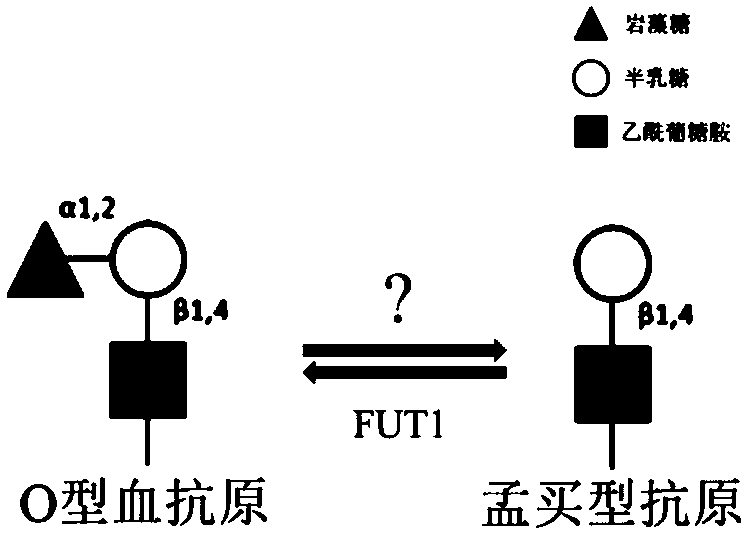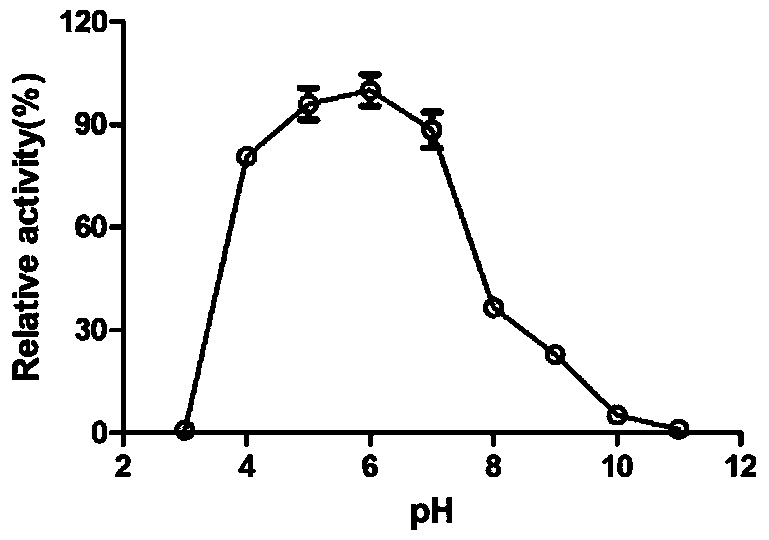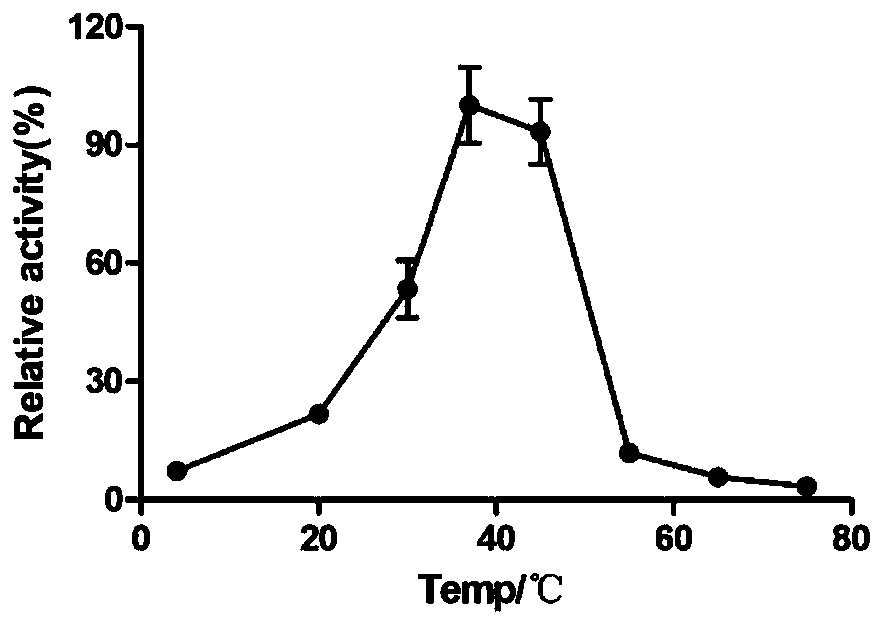Fucosidase and application of fucosidase to preparation of Bombay phenotype red blood cells
A technology of fucosidase and erythrocytes, applied in the field of glycobiology technology and engineering, can solve problems such as inability to import Bombay-type or Bombay-like individuals, difficulty in finding donors, and unfavorable conditions
- Summary
- Abstract
- Description
- Claims
- Application Information
AI Technical Summary
Problems solved by technology
Method used
Image
Examples
preparation example Construction
[0075] 1.2 Preparation of reaction substrate
[0076] The demonstration of this enzymatic activity was carried out using three types of substrates in the present invention.
[0077] 1. The development substrate pNP-Fuc was purchased from carbosynth company in the UK.
[0078] 2.3-FL, Lewis X and other non-blood group antigen oligosaccharides were purchased from carbosynth company in the UK; blood group antigen oligosaccharides A, B and H types 1, 2, and 4 were purchased from Elicityl OligoTech; 2'-FL is considered to be blood type 5 Antigen substances were purchased from Carbosynth Company, UK.
[0079] 3. Various types of concentrated red blood cells came from the Blood Transfusion Department of Ruijin Hospital and Shanghai Blood Center; the human ABO anti-typing red blood cell kit came from Changchun Broad Biotechnology Co., Ltd. Anti-H reagent is from Shanghai
[0080] The substrate pNP-Fuc and each oligosaccharide were reconstituted with ultrapure water, and 10 mmol / L was...
Embodiment 1
[0095] Example 1: csFase I digestion of pNP-Fuc and its enzymatic properties experiment
[0096] 1. Identification of fucosidase activity
[0097] Preparation of the reaction substrate: the substrate pNP-Fuc lyophilized powder (purchased from carbosynth company) was rethawed with distilled water at a concentration of 10 mM, and stored as a preservation solution.
[0098] Enzyme digestion reaction solution: 25mM phosphate solution (pH 5.0)
[0099] Enzyme digestion system: Substrate pNP-Fuc preservation solution 10 μL, enzyme 1 μL, add phosphate buffer to make up to 60 μL volume. As shown in Table 2 below, number 1 is used as the experimental group, and number 2 is used as the control group.
[0100] Table 2. Configuration of reaction system
[0101]
[0102] Reaction conditions: 37°C, 1h, immediately after the reaction, add 1M Na 2 CO 3 90 μL, stop the reaction, and use a microplate reader to measure OD=405nm. Based on the above results, it was judged whether the enzy...
Embodiment 2
[0109] Example 2: Enzyme digestion experiment of oligosaccharides
[0110] Substrate configuration: All oligosaccharides, including blood group-related and non-blood group antigen oligosaccharides, were prepared with ultrapure water to a concentration of 10mM.
[0111] Reaction system: 8 μL of phosphate buffer solution, 1 μL of oligosaccharide preservation solution, 1 μL of enzyme, a total of 10 μL of reaction system, reacted at 37°C for 1 hour.
[0112] Detection of enzyme digestion reaction: In this example, two methods are used to detect the products of oligosaccharide digestion
[0113] Method 1: detect according to the L-fucose detection kit (megazyme, Ireland). For the specific method, refer to the kit manual. The kit uses fucose dehydrogenase to oxidize fucose, and NADP+ to generate NADPH, NADPH can be measured by the absorbance value at 340nm and quantified according to the calibration curve, so as to quantify the fucose produced by enzymatic cleavage of oligosacchari...
PUM
 Login to View More
Login to View More Abstract
Description
Claims
Application Information
 Login to View More
Login to View More - R&D
- Intellectual Property
- Life Sciences
- Materials
- Tech Scout
- Unparalleled Data Quality
- Higher Quality Content
- 60% Fewer Hallucinations
Browse by: Latest US Patents, China's latest patents, Technical Efficacy Thesaurus, Application Domain, Technology Topic, Popular Technical Reports.
© 2025 PatSnap. All rights reserved.Legal|Privacy policy|Modern Slavery Act Transparency Statement|Sitemap|About US| Contact US: help@patsnap.com



